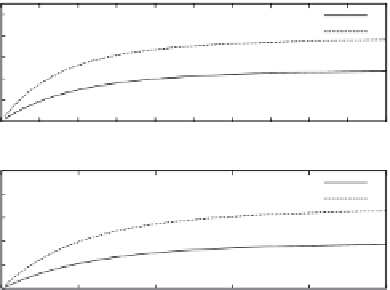Database Reference
In-Depth Information
|Data set| = 1 × 10
9
, Memory = 512 MB, reshold FPR = 0.1
0.5
0.4
0.3
RSBF
SBF
0.2
0.1
0
|Data set| = 1 × 10
9
, Memory = 512 MB, reshold FPR = 0.1
0.2
RSBF
SBF
0.16
0.12
0.08
0.04
0
0
200
400
600
800
1000
Size of stream (×10
6
)
FIGURE 13.3
FPR comparison.
by a significant margin. For 2 KB memory, RSBF has a stable FNR of 10%, which
is around 1.5× better as compared with SBF, which produces a stable FNR of 15%.
With increase in memory the performance gap between the two further increases in
favor of RSBF. Observe that for 4 KB memory, RSBF attains a stable FNR of nearly
12%, which is around 1.83× better than that of SBF with a stable FNR of 22%.
Figure 13.5 also compares the FNR between RSBF and SBF, albeit on synthetic
data set having 1B records and FPR threshold of 0.1. For both RSBF and SBF, the
FNR again initially increases but then stabilizes. For both 128- and 512-MB mem-
ory, RSBF similarly outperforms SBF. For 128-MB memory, RSBF has a stable
FNR of 22%, which is around 1.73× better compared with SBF, which has an FNR of
38%. With 512-MB memory, RSBF attains a stable FNR of 7%, around 1.86× better
|Data set| = 3,367,020, Memory = 2 KB, reshold FPR = 0.1
RSBF
SBF
0.2
0.15
0.1
0.05
0
|Data set| = 3,367,020, Memory = 4 KB, reshold FPR = 0.1
0.032
0.024
0.016
0.008
0
RSBF
SBF
0
500
1000
1500
2000
2500
3000
Size of stream (×10
3
)
FIGURE 13.4
FNR comparison: real data set.


Search WWH ::

Custom Search